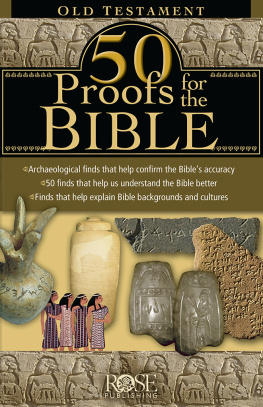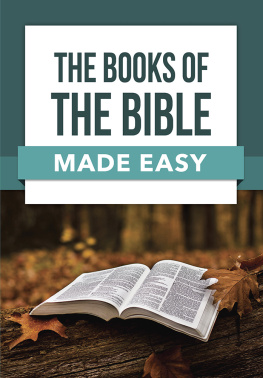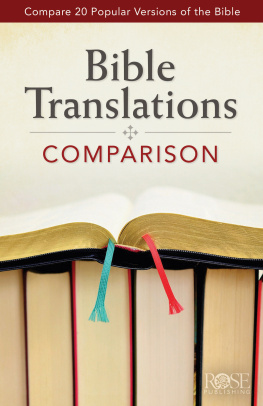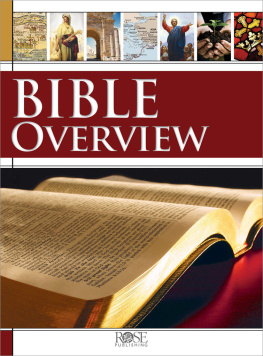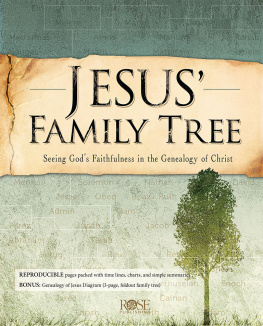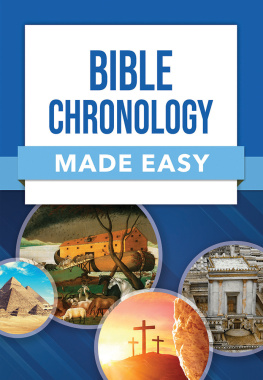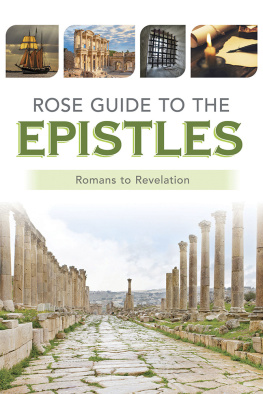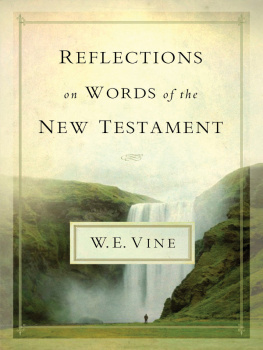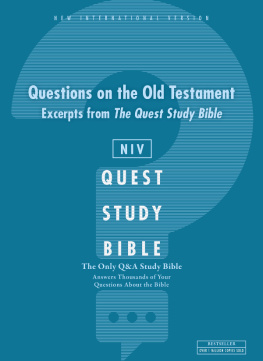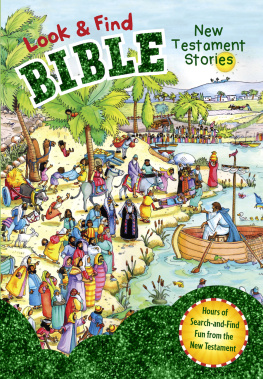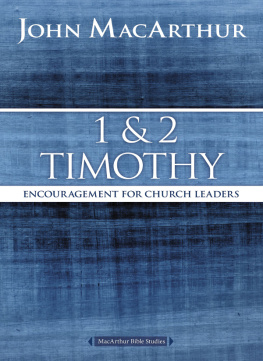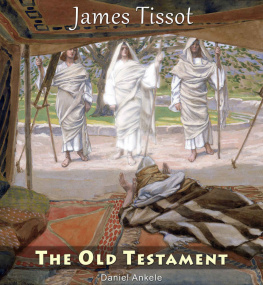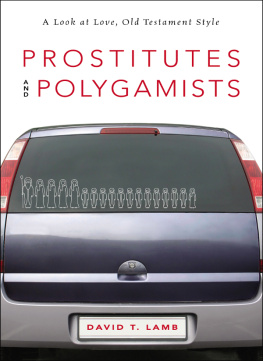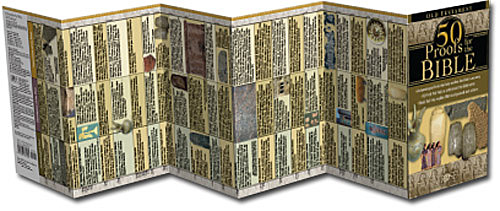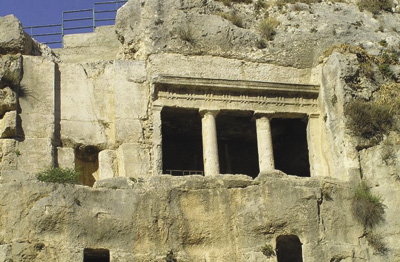The printed version of this eBook is the 50 Proofs for the Bible: Old Testament pamphlet, ISBN-13: 9781596361584
Acknowledgements: Text by Professor Larry McKinney, Central Baptist Theological Seminary (Kansas); Additional Research by Dan Master, Assistant Professor of Archaeology, Wheaton College (Illinois); Dr. John Monson, Assistant Professor of Archaeology, Wheaton College (Illinois).
Photos/Art: The British Museum, London; Museum of Anatolian Civilizations, Ankara, Turkey; Oriental Institute of the University of Chicago, Arvel Witte, Carol Witte, Gretchen Goldsmith, Lawrence E. Stager, Shlomo Moussaieff
Cover Art: Beni Hasan Tomb Painting, Karnak Temple Relief of Captives, House of David (Tel Dan) inscription, Ivory Pomegranate, Fragment of flood story, Dead Sea Jar, Royal Seals.
It is illegal to photocopy, transmit electronically, post on the internet, or reproduce this pamphlet in whole or in part in any form.
2007 RW Research, Inc.
Rose Publishing, Inc.
4733 Torrance Blvd., #259
Torrance, California 90503 U.S.A.
Email: info@rose-publishing.com
www.rose-publishing.com
All rights reserved.
50 Proofs for the Bible
Old Testament
This handy eBook:
- Gives a clear overview of 50 archaeological finds that back up the reliability of the Bible. It also gives insight into the backgrounds and cultures of the Bible.
- Examines key archaeological finds that help confirm the Bibles accuracy, including the House of David inscription (Dan inscription), which was the first reference to King David found outside the Bible.
- Features easy-to-understand descriptions of each of the proofs with accurate full-color pictures and photographs.
Arrangement of Events
The contents of this chart are generally arranged from the earliest events mentioned in the Bible to the most recent events.
Dates of Events (examples)
1st century BC = 100 BC to 1 BC
2nd century BC = 200 BC to 101 BC
10th century BC = 1000 BC to 901 BC
13th century BC = 1300 BC to 1201 BC
1st millennium BC = 1000 BC to 1 BC
2nd millennium BC = 2000 BC to 1001 BC
Reference Materials
Archaeology & the Old Testament , Dr. Alfred J. Hoerth
Rose Publishing resources that will help in the study of this topic are:
420X Bible Time Line pamphlet
425L Kings & Prophets wall chart
306X Then and Now Bible Maps book
561L Bible Overview wall chart
562X Bible Overview pamphlet
422L Archaeology & the Bible: Old Testament wall chart
434L Archaeology & the Bible: New Testament wall chart
624X Archaeology & the Bible: New Testament pamphlet
621X 100 Proofs for the Bible PowerPoint
Archaeological Find
41. The Lachish Reliefs
Among the ruins of the Nineveh palace of Assyrian King Sennacherib were found 62-foot-long reliefs that picture the fall of the Judean fortress of Lachish in 701 BC , over 100 years before the attack on and fall of Judah.
Description of the Find
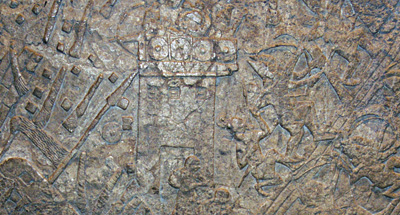
Assyrian troops are shown advancing with stone slingers and archers. Siege towers were wheeled up ramps to batter the city wall. Arvel Witte
Importance of the Find
These Nineveh palace carvings of the Lachish defeat amplify the biblical record concerning the siege of the kingdom of Judah in the days of King Hezekiah. In 2 Kings 18:13 it says, Now in the fourteenth year of King Hezekiah did Sennacherib, king of Assyria, come up against all the fenced cities of Judah, and took them. However, before the Assyrians could capture Jerusalem, they were destroyed by Gods angel and Sennacherib withdrew (2 Kings 20:35; 2 Chronicles 32).
Book(s) of the Bible
2 Kings, 2 Chron.
Archaeological Find
42. Sennacherib Prism
A 15-inch tall, six-sided baked clay prism from ancient Assyria contains the story of the invasion of the kingdom of Judah by Sennacherib in 701 BC . The prism was found at Nineveh.
Description of the Find
King Sennacherib of Assyria is mentioned in 2 Kings 18-19. Isaiah prophesied that God would protect Jerusalem against attack by Sennacherib (Isaiah 36-37, 2 Chronicles 32). While the prism does say that the Assyrians trapped Hezekiah in Jerusalem like a bird in a cage, like the biblical record, it says nothing of them conquering the city.
Importance of the Find
The Bible says that God spared Jerusalem. The prism, together with the Lachish reliefs and excavations, adds detail to the biblical account. King Hezekiah prayed to the L ORD . Isaiah brought him Gods message. That night the L ORD smote 185,000 Assyrians, and Sennacherib went back to Nineveh and later was killed by his sons (Isaiah 37:35-38).
Book(s) of the Bible
2 Kings, 2 Chron., Isaiah
Archaeological Find
43. The Tomb of the Priestly Hezir Family
In an elaborate tomb complex cut into the wall of Jerusalems Kidron Valley is a Hebrew inscription identifying the burial cave as belonging to the descendants of Hezir.
Description of the Find
The names of three generations of priestly Hezir family members also appear in the inscription, verifying the existence of this priestly family mentioned in 1 Chronicles 24:15 and Nehemiah 10:20.
Importance of the Find
A list of the Levitical priests during King Davids time found in 1 Chronicles 24 includes the name of Hezir. Later, in Nehemiah 10, another priest named Hezir (possibly a descendant of the former Hezir) is listed as one of the priests who signed a covenant to keep Gods Law in the restored Temple around 450 BC .
Book(s) of the Bible
1 Chron., Nehem.
Archaeological Find
44. Carchemish, Where History Changed Course
This city is mentioned only three times in the Bible, but archaeology reveals that it was in a strategic location, desired by the Hittites, Assyrians, and Babylonians.
Description of the Find
Carchemish was important in biblical history for one key battle. In 605 BC , the Babylonians defeated the Assyrian and Egyptian armies there. This destroyed the Assyrians and paved the way for the Babylonians to conquer much of the biblical world, including the kingdom of Judah.
Importance of the Find
In 586 BC , the Babylonians stormed Jerusalem and destroyed the Temple. Jeremiah 46 and 2 Chronicles 35-36 speak of the prophecies and circumstances leading up to the Battle of Carchemish, and the devastating chain of events that followed.
Book(s) of the Bible
2 Chron., Jeremiah
Archaeological Find
45. The Lachish Letters
In 1935 an archaeologist unearthed several letters, written about 588 BC , on 21 pottery pieces (ostraca) from among the burned ruins of the ancient city of Lachish of Judah.
Description of the Find
The Lachish messages were desperate pleas by the Judean defenders of the city for military assistance. Apparently the city was conquered by Nebuchadnezzar before the letters could be sent.

